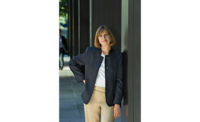In this issue of RECORD, we present our annual feature, Design Vanguard, which first launched in the magazine more than 20 years ago. Through this window, we look at 10 young practices—each less than a decade old—selected through submissions from around the world. It gives us a chance not only to explore the promise of the future generation of architects but also to begin to see emerging trends.
Adaptive reuse, for example, is a dominant typology engaging several of this year’s Vanguard choices, such as KOGAA, a firm that managed to resurrect a building so derelict it seemed beyond hope, for a multiuse space called the Distillery in its home base of Brno, the Czech Republic. The Chicago-based DAAM frequently converts old buildings to new uses, and, as for several of this year’s honored firms, its design work often supports social causes. Similarly, SPA, a Berkeley, California, practice led by two women, largely does residential projects, but has designed a school in Nairobi for a nonprofit, as well as creating parklets closer to home. Comunal, also headed by two women, builds low-cost housing in impoverished communities in Mexico, drawing on local people in the design and construction process.
Other Vanguards are richly enhancing public space. While Yong Ju Lee of South Korea is intensely engaged in esoteric parametric design, his results include such fantastic public amenities as the undulating Root Bench for a waterfront park in Seoul. Hou de Sousa, a husband-wife firm based in New York, uses unexpected materials such as cord in brilliant Day-Glo colors for installations and pavilions in public spaces.
Local context is a key starting point for most Vanguards, whether in the thoughtful work (often on a tight budget) from the Raleigh, North Carolina, architect Andre Johnson, or the gritty aesthetic embraced by the Detroit-based firm Undecorated. The practice Bright Common respects the domestic scale of the Fishtown neighborhood of Philadelphia where most of its residential designs are built—and, when possible, it brings the rigorous environmental standard Passive House to its projects. While the two partners in the Zurich firm Atelier Scheidegger Keller like to launch a house design with the specificity of place, light, and local building culture in mind, “Every new project is an opportunity to address things from scratch,” says Christian Scheidegger.
As we celebrate a new class of Design Vanguard this month, we also say goodbye to two lions of the Old Guard. Helmut Jahn was killed in a tragic bicycle accident, at age 81. Once dubbed the “Flash Gordon of American architecture,” Jahn leaves a portfolio of robust urban projects in various locales from Chicago (where the German-born architect was based) to New York and Berlin. And Art Gensler, the legendary founder of the firm that bears his name, died at his northern California home at age 85. His was a classic Horatio Alger story, from his boyhood desire to become an architect and his first office in a crummy San Francisco walk-up, to his nurturing of a collaborative culture that has grown into the largest architectural firm in the world.
Yet a number of elder statesmen of architecture continue to thrive, and, in this issue, we analyze the subtle $233 million addition and renovation of the great classical-style Philadelphia Museum of Art, as designed by Frank Gehry. That Gehry undertook such a self-effacing project may surprise some people. But the architect, who long ago studied planning (at Harvard’s GSD), brought—along with his team—a strong sense of logic to this project, as he deferred to the many glories of the museum’s original architecture. One of the obvious Gehry-esque moments may be the new set of stairs seen on our cover.
And, finally, don’t miss RECORD’s special section on hospitality, which arrives in time for summer and the cautious lifting of certain Covid restrictions. The hotels, restaurants, and event spaces—from Washington to Lima to La Paz, Mexico—offer inspiration for both adaptive reuse and new construction in a building type that is coming back to life.




